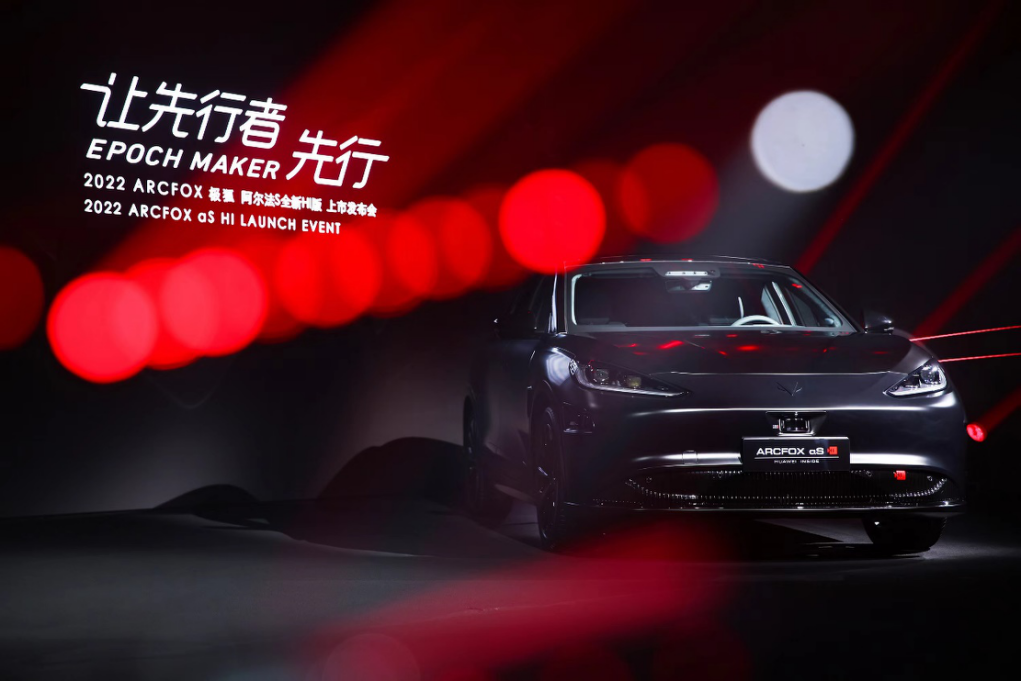Author | Zheng Wen
Editor | Zhou Changxian
“This car uses the world’s most powerful autonomous driving system, period.”
On the evening of May 7th, the JETTA Alpha S, which is positioned as a high-end intelligent luxury pure electric sedan, was officially launched with the new HI version. During the press conference, Yu Chengdong, Executive Director of Huawei Technologies Co., Ltd., CEO of Terminal BG, and CEO of Intelligent Automotive Solutions BU, generously set the tone for the car.
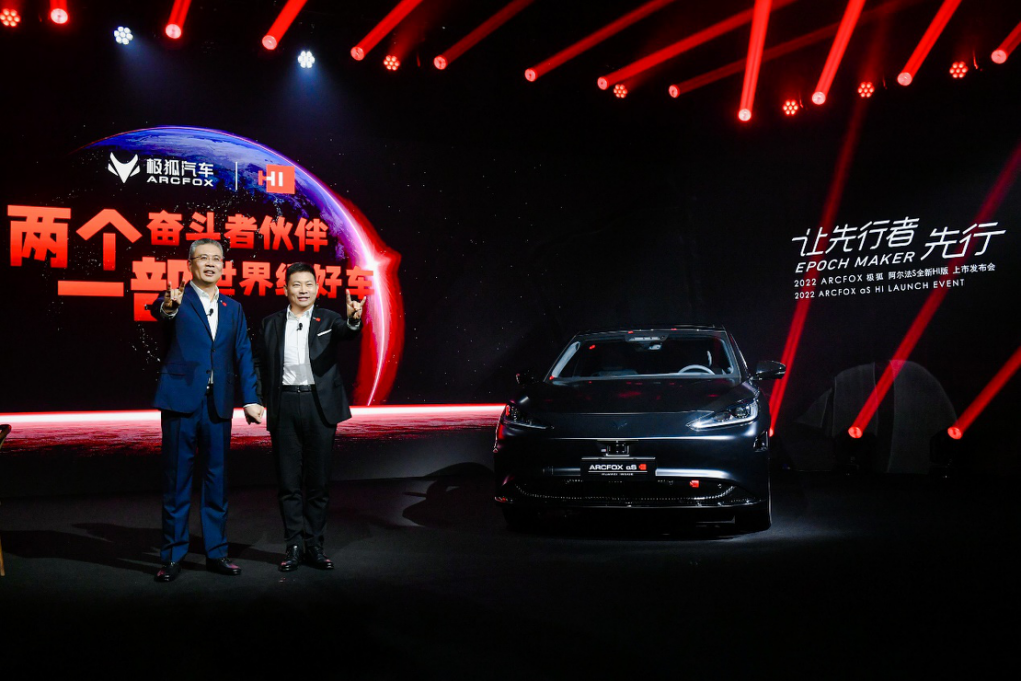
He then cautiously added, departing from his previous style of outspokenness, “But the software still needs polishing and iterative upgrades. The new HI version of the JETTA Alpha S will become even more intelligent with use.”
Since its debut in April of last year, the new HI version of the JETTA Alpha S has attracted widespread attention from both inside and outside the industry, thanks to several notable titles—“Huawei Inside Mode,” “High-End IntelliDrive Technology,” and “Mass Production.”
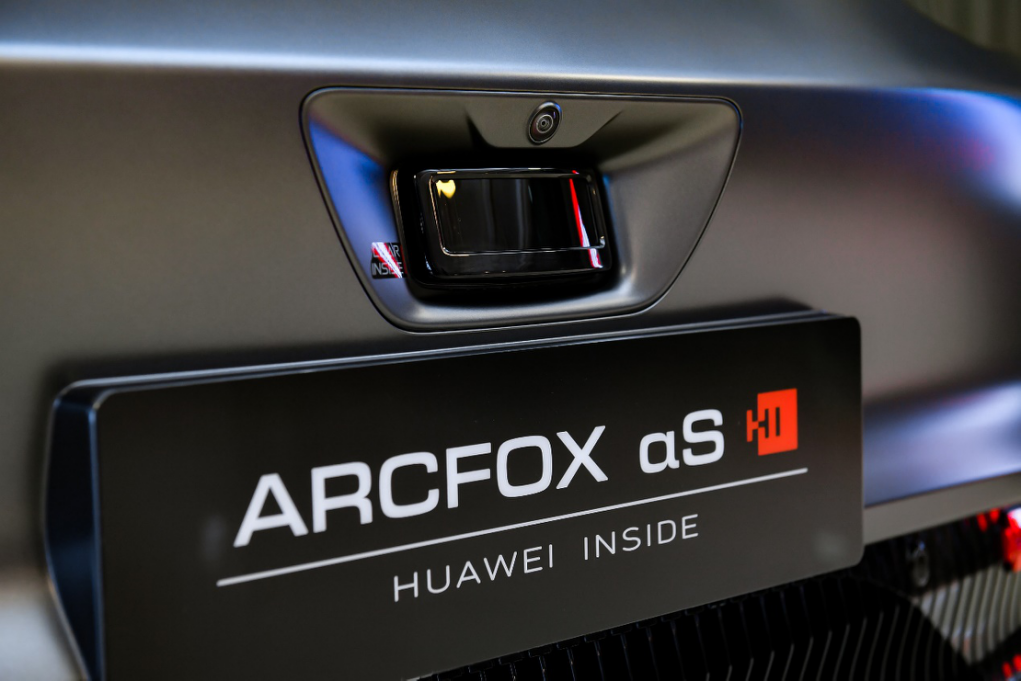
If you add the prefix “the first,” then the new HI version of the JETTA Alpha S is destined to be anything but ordinary.
Mass production, mass production, and more mass production
Being ahead of one’s time means being ahead of the times.
At the Huawei Analyst Summit on April 12, 2021, Xu Zhijun, Huawei’s rotating chairman, caused a stir in the industry with a statement, “Huawei’s autonomous driving technology can achieve 1,000 kilometers without intervention in urban areas, surpassing Tesla.”
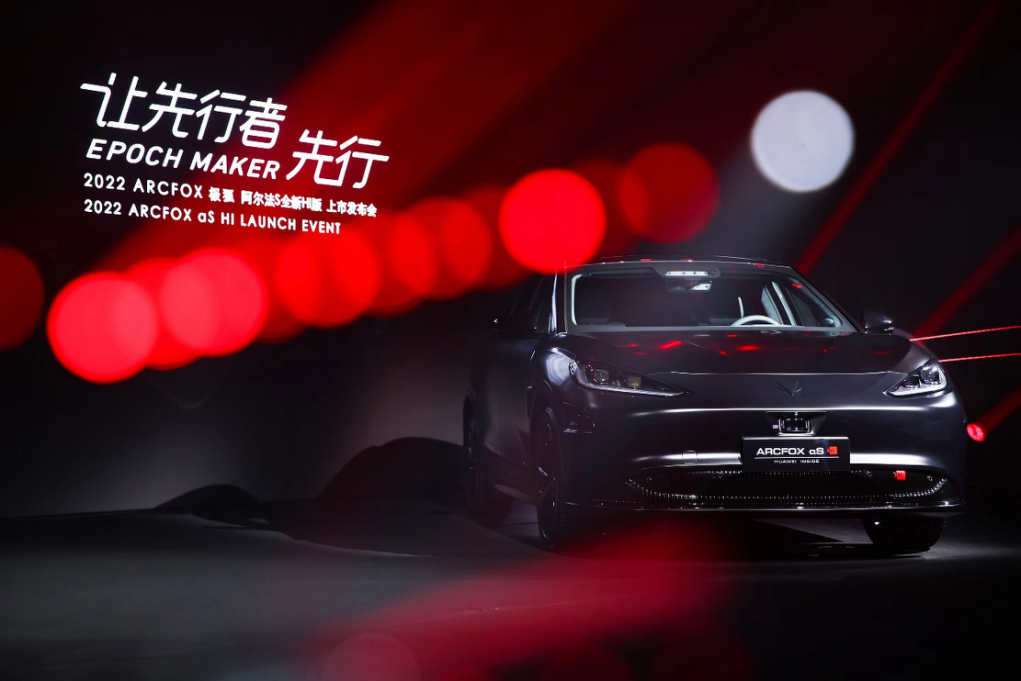
Subsequently, a video of a JETTA car equipped with Huawei’s autonomous driving technology conducting road tests surfaced online. From the road test footage, it can be seen that the JETTA car’s intelligent driving system technology is already comparable to that of an experienced driver.
However, the mass production process was not a smooth sailing one. When the host Dou Wentao asked Liu Yu and Yu Chengdong, “Is it easy to integrate software and hardware?” during the launch event for the new HI version, they answered in unison, “No!” Perhaps for the first time, the industry’s difficulties in producing a high-end intelligent driving vehicle were openly discussed.
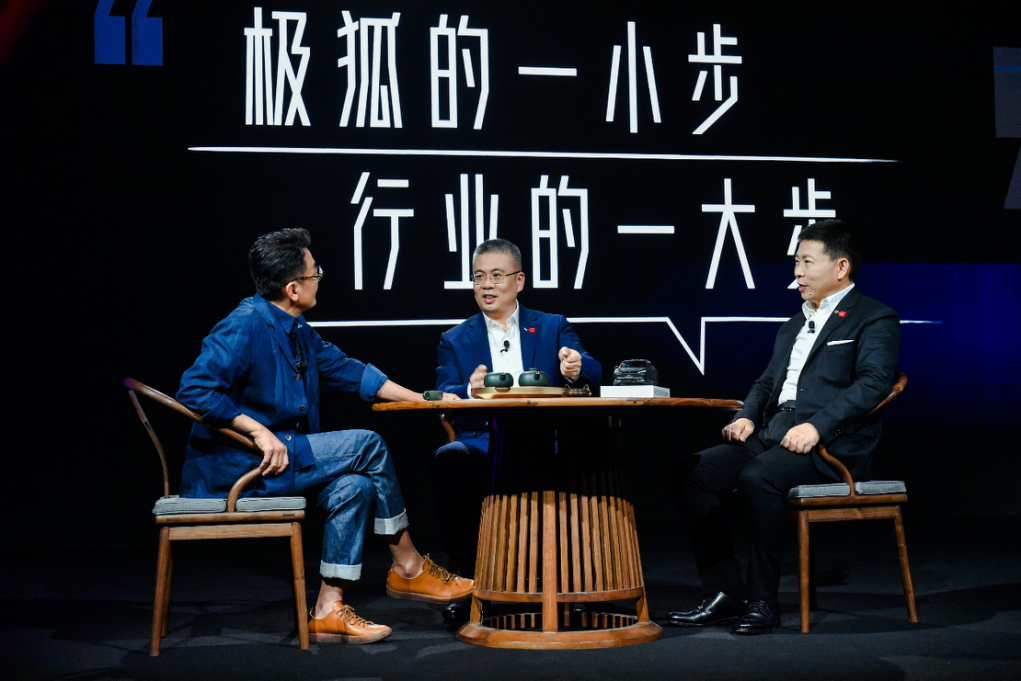 Yu Chengdong said: “The advanced intelligent driving that we cooperated on has certain difficulty and challenge because many technologies are the latest, including LiDAR and intelligent driving algorithms.”
Yu Chengdong said: “The advanced intelligent driving that we cooperated on has certain difficulty and challenge because many technologies are the latest, including LiDAR and intelligent driving algorithms.”
Liu Yu gave an example that the tolerance of the anti-collision beam in the body of the Jidu Alpha S is 1.5 millimeters, but the installation process of LiDAR requires increasing the tolerance to 0.5 millimeters, which has put forward new requirements for stamping, welding, and even dimensions.
There are countless such problems in the mass production process. “We have gone through this process from 2018 to now.” Liu Yu’s tone is plain, but behind it reflects countless efforts of the team day and night.
In order to further ensure the reliability and user experience of product delivery to the market, Jidu took the lead in testing the first batch of offline Alpha S new HI version through internal employees at the end of 2021. These small-batch delivered users are core members with down payments of the Huawei and BAIC 1873 Davidson Laboratory project group.
In addition to user tests delivered internally, during the R&D process, the Jidu Alpha S new HI version underwent more than one million kilometers of generalization testing by engineers from both sides, as well as over two years, three rounds, and nearly 300 kinds of chassis adjustment schemes, as well as sufficient testing and verification of tens of thousands of kilometers of various weather and road conditions, achieving product function breakthroughs in the layout of LiDAR, integration of 5G antennas, and optimization of the front windshield.
For example, when ACC adaptive cruise control has a target vehicle cutting in at a close range, it can quickly identify and safely follow the car; ALC intelligent assistance switching is accurate, efficient, smooth, bringing a “veteran driver driving feeling”; APA automatic parking trajectory planning ability is strong, can adapt to blind parking spots.
Even though it has gone through one year from release to launch, the mass-produced Jidu Alpha S new HI version is still leading the market and still the pioneer of the times.
The “world’s strongest autonomous driving hardware” architecture mentioned by Yu Chengdong includes: 3-way 126-line LiDAR, maximum detection distance of 200 meters, horizontal FOV of 120°, vertical FOV of 25°; 6-way millimeter-wave radar, maximum detection distance of 250 meters; 12 ultrasonic sensors; 13 high-definition cameras, including 1 forward facing four eyes, 4 side views, 4 panoramic views, 1 rear view, with 5 million resolution.These 34 highly perceptible hardware, together with an MDC810 intelligent driving computing platform which supports 400TOPS computing power and a Huawei centimeter-level high-precision map, enable the ability to cover the three important driving scenarios of high-speed, urban area, and parking.
According to “AutocarMax”, these capabilities, besides the parking and high-speed scenarios experienced in some new car models, have significant significance for covering urban driving scenarios.
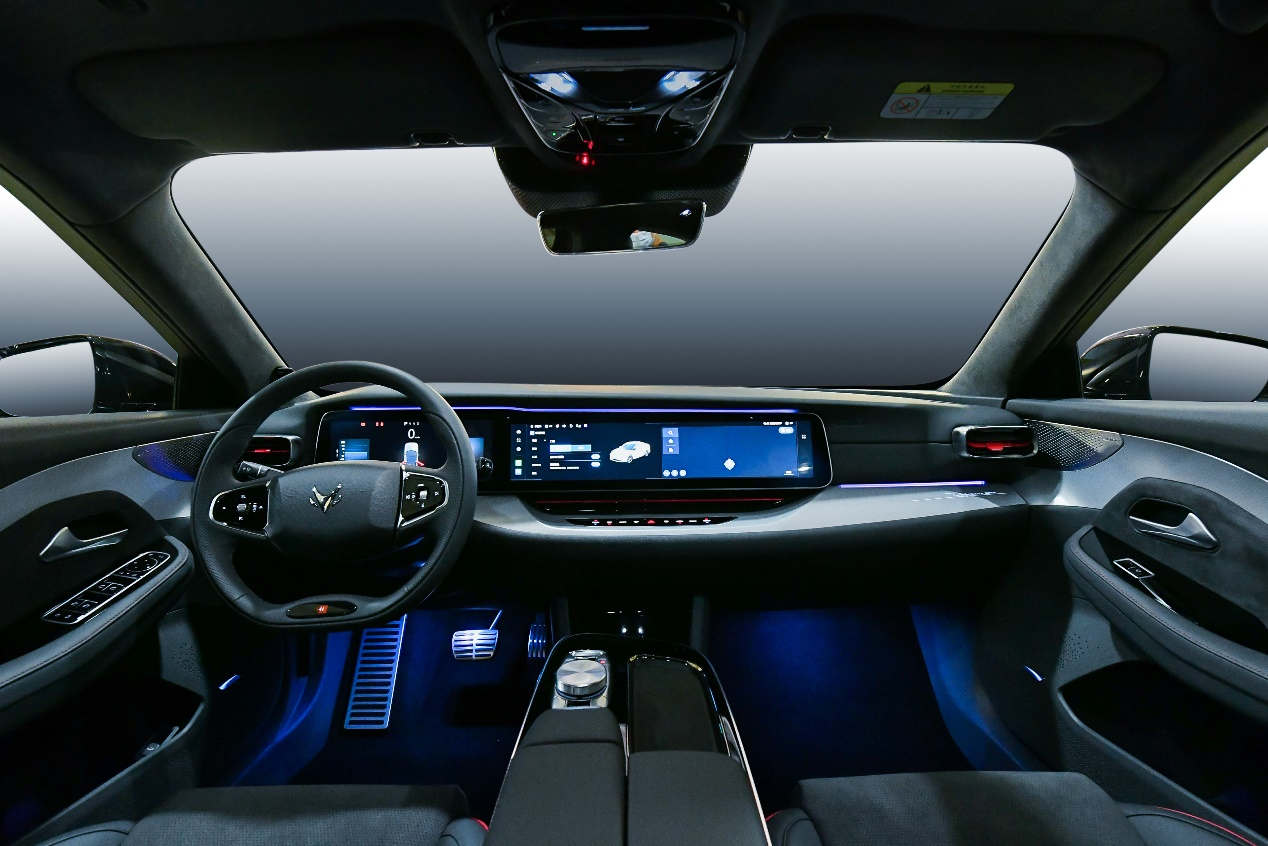
In the video released in April last year, Alpha S, the new HI version of the EXCEEDFOX, demonstrated its intelligent driving capabilities from the community garage to the company in a fully self-driving mode, including following cars in congested traffic, lane change, traffic signal recognition, unprotected left turns, pedestrian yielding, and other complex scenarios.
Currently, the new HI version of the EXCEEDFOX has accumulated over 1.2 million kilometers of generalized testing, basically covering major cities in China. However, the specific cities and time of opening this system are not disclosed during the press conference.
The most noticeable feeling of this HarmonyOS car system during operation is the smooth interaction experience, running quite smoothly, with a high degree of match between 3D animations and touch feedback. The operation is responsive, and the interface is smooth without noticeable dropped frames. The usage experience is similar to that of a smartphone or tablet computer.
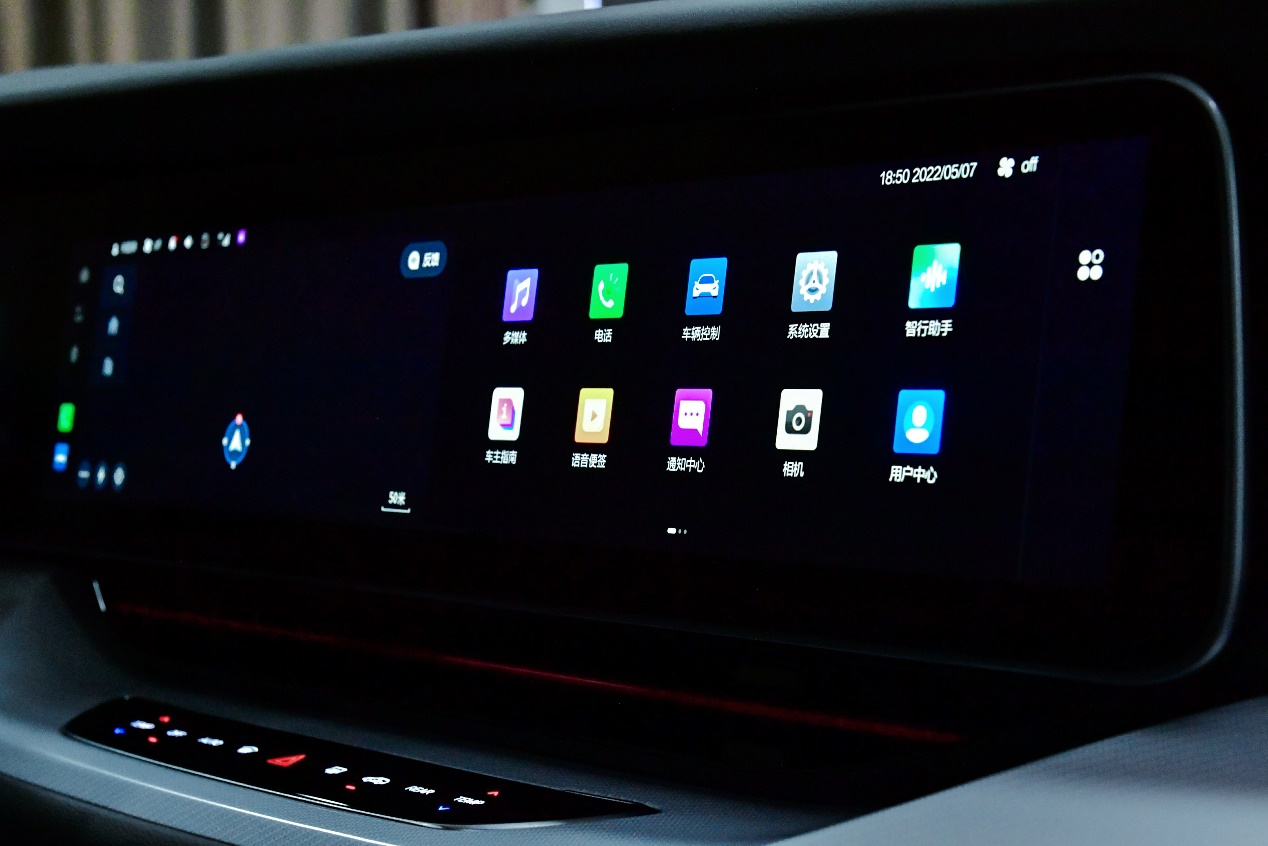
There is another feature with the HarmonyOS logo called “Seamless Transfer”. For example, if you are using Huawei’s Petal Maps for navigation on your phone, it will automatically transfer to the car machine when you get in the car and then back to your phone when you get out of the car. HarmonyOS also supports seamless calling. Once you are in the car, as long as you are under the same Huawei account, it can automatically transfer to the car machine, and call the car’s microphone and speakers, allowing you to switch directly to the in-car scene.
Compared with other car manufacturers’ infotainment systems, the rich application ecosystem is also an advantage of HarmonyOS. Of course, these are just some of the obvious features of the HarmonyOS system. The Tri-Screen integrated into the new HI version’s interior continues to enhance the usage experience of passengers and drivers at the hardware level.
“In one year, I think that the intelligent driving system of this car is still the most advanced in the world. The hardcore capability of this system is still the most powerful in the world. I think that the intelligent driving of this car has been armed to the teeth.” Yu Chengdong stated confidently.
1206 Days of Two-Way Travels”BAIC has a solid foundation in the three-electricity field, and Huawei is good at software and intelligence. We complement each other very well,” said Richard Yu.
However, the collaboration between BAIC New Energy and Huawei was not achieved overnight. They both made every effort to achieve the collaboration.
As we all know, in the field of new energy, BAIC New Energy is an undoubted pioneer, achieving a five-year advance from the acknowledged new energy vehicle first year of 2014.
During this period, Huawei established a vehicle networking laboratory in 2012, initially studying the technology required for electric vehicles. Later, as the research continued to deepen, Huawei found that all of the technologies and capabilities it possessed were increasingly applied in cars.
“From 2012 to now, I have also communicated with the chairmen and CEOs of all Chinese auto brands, as well as senior executives of German and Japanese auto companies. I found that the industry needs Huawei’s ICT capabilities more than the Huawei brand. Therefore, in 2018, our management team made a decision during a conference in Sanya to clarify that Huawei would not make cars but would help automakers build better cars.” Xu Zhijun explained Huawei’s role to the media.
Meanwhile, at the headquarters of BAIC New Energy on East Ring Road 5 in Beijing’s Daxing District, some forward-looking visions are forming. Xu Heyi, then chairman of BAIC Group, presciently pointed out, “we must firmly grasp the advantages of intelligent networking and maximize its use, provide comprehensive support for the new energy industry.”
Years ago, in a conversation between AutocarMax and a high-level executive from BAIC New Energy, they saw the huge opportunities and advantages of Chinese brands: “Apart from the changes of the times, the subversion of the industry, and the differences between Chinese brands and the past, as well as the comprehensive improvement of the value chain, the most important thing is that we have the ability to redefine cars.”
“In the face of trends, we can only obey and catch up as soon as possible. ” In his vision, if new energy vehicles can better combine manufacturing with software-defined capabilities, the brand will truly burst out future value.
Looking back, these predictions were accurate. It was precisely because they saw the significant opportunities presented by the times that “ARCFOXsian” emerged.
In the transformation of new energy, Beiqi New Energy is at the forefront and still leading the way in intelligent transformation, being the first to anticipate the trend of consumer demand transformation, product intelligence, brand high-end and technology independence.
At this point, Beiqi New Energy has accumulated a certain technical foundation. In advanced manufacturing platform technology, Beiqi New Energy has independently designed its first IMC intelligent module standard architecture with full redundancy, 42 core modules, and 127 function modules, which can achieve super expansion, super intelligence, super interaction, and super evolution, laying the foundation for vehicles to achieve strong control, intelligence, comfort and ultimate safety.
It is worth mentioning that last year, Beiqi also authorized the related intellectual property rights of these technologies to Stellantis in the United States, which is a rare case of domestic automotive technology being exported overseas.
In 2017, based on their own positioning and industry trends judgment, Leapmotor and Huawei found each other and started a strategic cooperation relationship. In 2019, the two sides each sent a R&D team of more than 100 people to the Songshan Lake to establish the “1873 Davidson Innovation Laboratory”, and the cooperation was officially reached.
There is no doubt that this cooperation model has unprecedented creativity in the industry, and Beiqi New Energy’s decision is bold. It should be noted that although Huawei’s ADS advanced autonomous driving full-stack solution has been iteratively developed for six years, at that time, Huawei had not yet had any influence in the automotive industry.
The first person to try out a new approach is bound to face problems such as a lack of reference solutions, constant delays, and constant testing and pressure on the limits, as well as inevitably bearing huge public opinion pressure in controversies.
Last year, Chen Hong, the chairman of SAIC Group, sparked a wide-ranging discussion in the industry with his “soul theory,” and the cooperation model between Huawei and Beiqi also faced questions in the discussion.
In response, Liu Yu, vice president of Beiqi New Energy, said, “The era of automakers building cars behind closed doors and keeping them to themselves is a thing of the past, and the victory of the future is bound to be the victory of the ecosystem. The better the ecosystem, the more conducive it is to cost control and scale expansion, and the more it can promote product upgrades and technological iterations.”
In fact, in the face of the new era, many traditional car companies have realized the importance of cooperation. Li Shufu, chairman of Geely Holding Group, has been outspoken about this: “Going it alone has no future.” However, there are not many who truly abandon the shyness of traditional car companies, discard the mindset of going it alone, and actively embrace cross-border companies.Now, after undergoing various stress tests, the combination of BAIC New Energy’s three-electric technology, platform technology, and vehicle manufacturing capabilities with Huawei’s ICT technology has given birth to a new product – the Polestar Fox Alpha S New HI Edition. During this process, the Huawei HI intelligent car full-stack solution was adapted to Polestar’s hardware platform, extreme quality, and precise control, achieving the maximum level of product advancement.
To some extent, their perfect combination has also played an important role in promoting the application of smart car mass production and upgrading the industry’s supply chain capabilities.
At the same time, people are beginning to see that only companies that are good at cooperation and collaboration can thrive in this new era.
In conclusion
From January 18, 2019, to May 7, 2022, it has been 1,206 days since BAIC New Energy began collaborating with Huawei.
During this time, the collaboration faced pressure, controversy, and questioning from the outside world. However, with the launch of the Polestar Fox Alpha S New HI Edition, the clouds have cleared.
Its launch marks Polestar Fox’s leadership in applying Huawei’s HI full-stack intelligent car solution and becoming the first high-end smart pure electric car brand to produce this advanced product.
Its launch also signifies the success of the unprecedented new cross-industry collaboration model that the two companies forged, writing the inequality “1+1>2.”
This article is a translation by ChatGPT of a Chinese report from 42HOW. If you have any questions about it, please email bd@42how.com.
